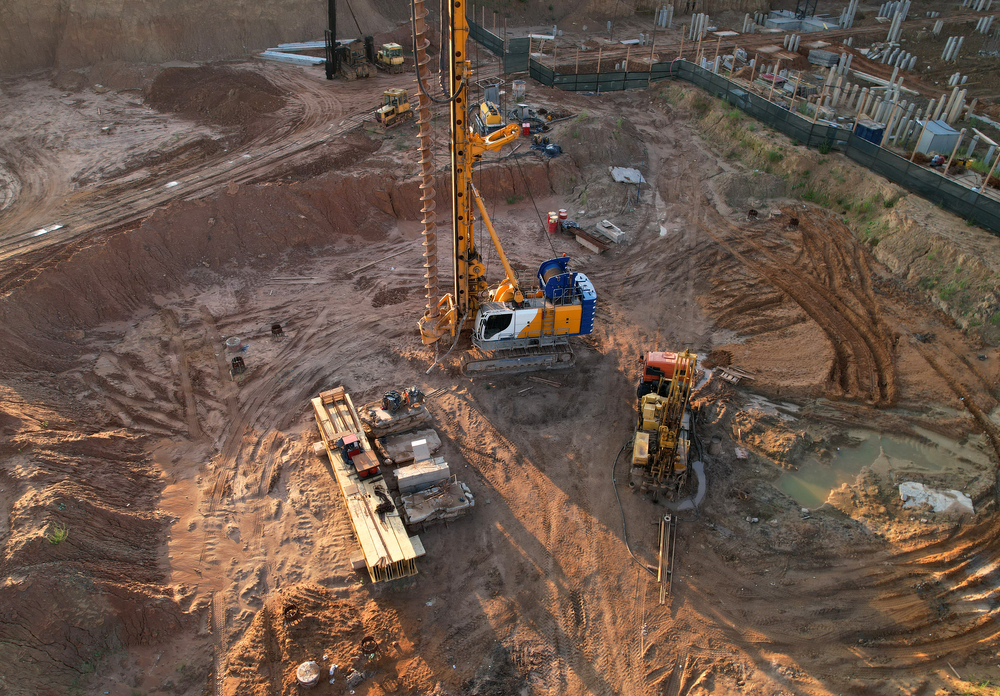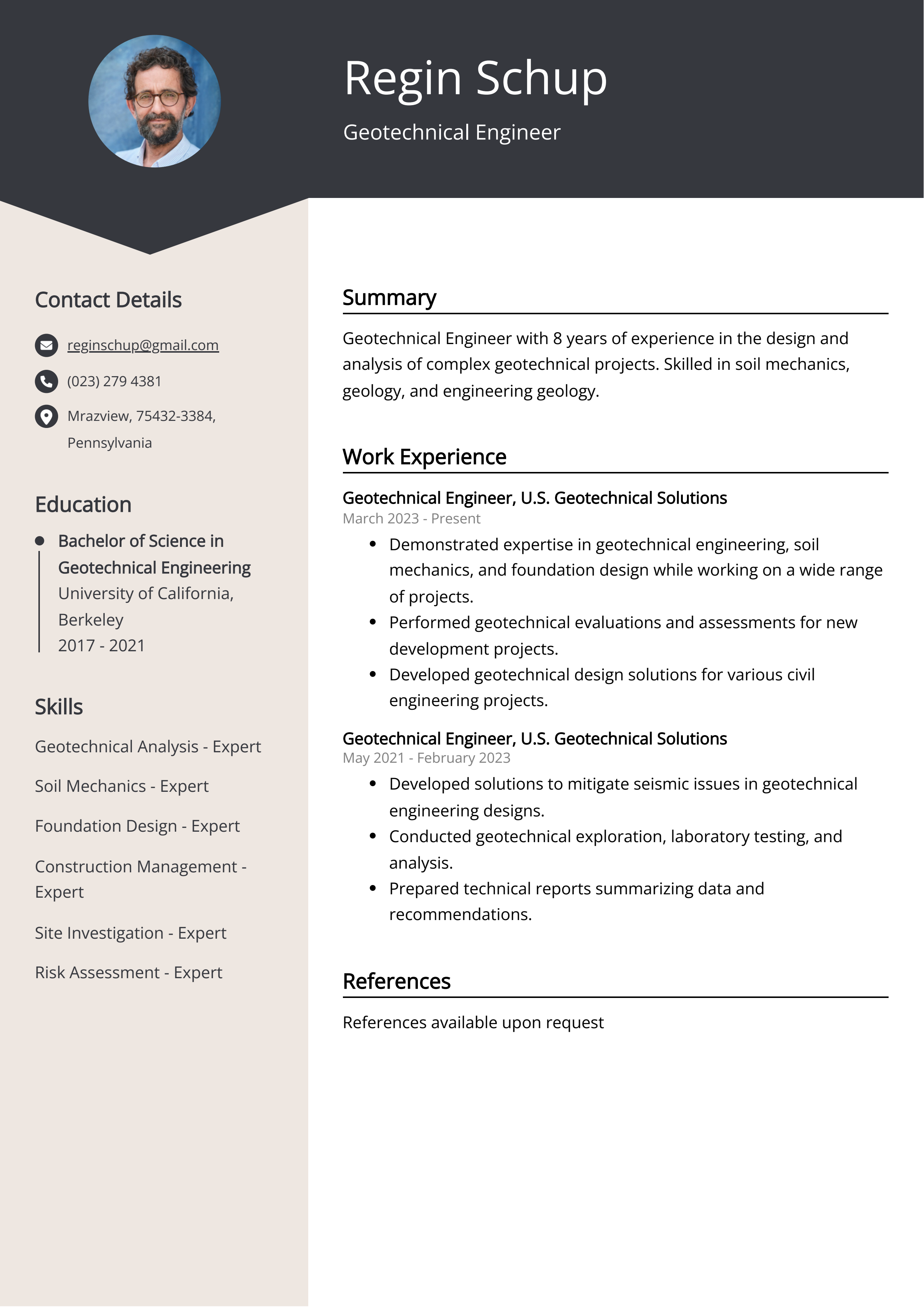The Ultimate Guide To Geotheta

A geotechnical designer is a specialized civil engineer who focuses on the habits of soil, rock, and various other materials discovered underneath the Planet's surface area. They use scientific principles and engineering methods to analyze the residential or commercial properties and habits of these products to support the risk-free and effective style, construction, and upkeep of framework projects.
They conduct website investigations, accumulate samples, do lab tests, and analyze information to evaluate the suitability of the ground for building and construction projects - Geo Tech Engineer. Based on their findings, geotechnical engineers provide recommendations for foundation style, incline stability, retaining frameworks, and reduction of geotechnical hazards. They collaborate with other experts, such as architects, architectural designers, and building and construction teams, to make certain that geotechnical considerations are incorporated into the general job style and implementation
By assessing the behavior and buildings of soil and rock, they can recognize prospective geotechnical dangers such as landslides, dirt settlement, or incline instability. Their experience helps stop failings or mishaps that could endanger lives and home. Below are some in-depth obligations and duties of a geotechnical engineer: Site Examination: Geotechnical designers conduct website investigations to collect data on subsurface problems.
They analyze the data to comprehend the properties and behavior of the dirt and rock, including their toughness, leaks in the structure, compaction features, and groundwater conditions. Geotechnical Analysis and Style: Geotechnical engineers examine the information accumulated throughout website investigations to evaluate the security and suitability of the website for building projects. They carry out geotechnical estimations and modeling to assess factors such as bearing capability, negotiation, incline stability, lateral earth stress, and groundwater circulation.
Geotheta Can Be Fun For Everyone
Structure Style: Geotechnical designers play an essential role in making structures that can safely sustain the designated structure. They examine the dirt problems and lots requirements to identify the suitable structure type, such as superficial foundations (e.g., footings), deep structures (e.g (http://peterjackson.mee.nu/do_you_ever_have_a_dream#c2153)., stacks), or specialized methods like dirt renovation. They consider aspects such as negotiation limits, bearing capability, and soil-structure interaction to create ideal structure layouts
They assess building and construction strategies, monitor website tasks, and carry out field inspections to validate that the layout recommendations are adhered to. If unexpected geotechnical problems arise, they analyze the scenario and supply suggestions for removal or adjustments to the style. Risk Analysis and Reduction: Geotechnical engineers examine geotechnical risks and risks linked with the job website, such as landslides, liquefaction, or dirt erosion.

Cooperation and Communication: Geotechnical designers work very closely with other professionals involved in a task, such as engineers, architectural designers, and building teams. Reliable interaction and cooperation are necessary to incorporate geotechnical factors to consider right into the total task design and building and construction process. Geotechnical engineers offer technical experience, answer questions, and ensure that geotechnical demands are satisfied.
Indicators on Geotheta You Need To Know
Right here are some sorts of geotechnical engineers: Foundation Engineer: Structure designers focus on creating and examining structures for frameworks. They analyze the dirt conditions, tons demands, and site features to establish one of the most suitable structure type and style, such as shallow foundations, deep structures, or specialized strategies like pile structures.
They review the factors affecting incline stability, such as dirt buildings, groundwater problems, and slope geometry, and establish approaches to avoid incline failings and mitigate threats. Quake Engineer: Earthquake designers focus on analyzing and making structures to endure seismic forces. They assess the seismic risk of a site, assess soil liquefaction possibility, and create seismic style requirements to make certain the safety and durability of frameworks throughout quakes.
They perform area screening, gather examples, and analyze the collected data to characterize the soil residential properties, geologic formations, and groundwater conditions at a site. Geotechnical Instrumentation Engineer: Geotechnical instrumentation designers focus on tracking and measuring the habits of soil, rock, and frameworks. They set up and maintain instrumentation systems that keep an eye on elements such as soil negotiation, groundwater levels, incline movements, and architectural displacements to evaluate performance and give early warnings of prospective issues.
The smart Trick of Geotheta That Nobody is Talking About
They tend check my reference to be investigative individuals, which suggests they're intellectual, reflective, and curious. They are curious, systematic, reasonable, analytical, and sensible. Some of them are likewise social, indicating they're kind, generous, participating, individual, caring, helpful, compassionate, tactful, and pleasant - Geo Tech Engineer.
In the workplace atmosphere, geotechnical engineers make use of specialized software program devices to execute calculations, develop styles, and examine information. They prepare reports, testimonial task specs, communicate with customers and team participants, and coordinate task tasks. The workplace setup supplies a conducive environment for research study, analysis, and cooperation with various other professionals entailed in the job.
The 3-Minute Rule for Geotheta
They often go to task sites to conduct website examinations, evaluate geotechnical problems, and collect information for analysis. These sees involve traveling to various areas, sometimes in remote or difficult surfaces. Geotechnical designers may do soil tasting, conduct tests, and display building activities to make certain that the geotechnical facets of the job are being executed appropriately.
Geotechnical designers likewise work in specialized geotechnical labs. Geotechnical lab engineers work thoroughly in these settings, managing testing devices, operating instruments, and videotaping information.
Comments on “The Basic Principles Of Geotheta”